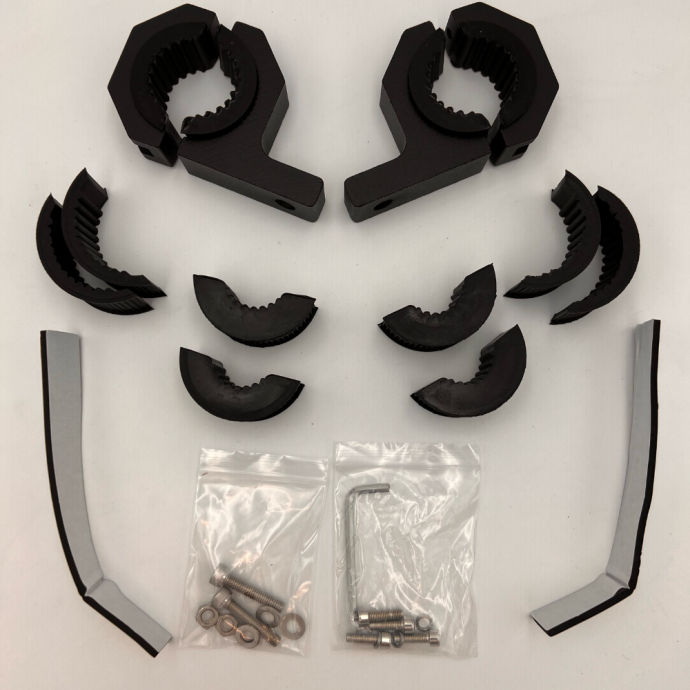Charting the Course: Managing and Living with Mild Cognitive Impairment
While there is currently no cure for Mild Cognitive Impairment (MCI) or a definitive way to prevent its progression to dementia, there are strategies for managing symptoms, promoting cognitive health, and living well with MCI. Charting the course of managing MCI involves a proactive approach encompassing lifestyle modifications, cognitive strategies, and ongoing medical care.
https://www.marketresearchfuture.com/reports/mild-cognitive-impairment-market-10916
The management of MCI focuses on several key areas:
Lifestyle Modifications: Adopting a healthy lifestyle can play a significant role in supporting cognitive function and potentially slowing cognitive decline:
Healthy Diet: Following a balanced diet rich in fruits, vegetables, whole grains, lean protein, and healthy fats (such as omega-3 fatty acids found in fish) is beneficial for overall brain health. The Mediterranean diet is often recommended.
Regular Exercise: Engaging in regular physical activity has been shown to improve cognitive function and reduce the risk of cognitive decline. Aim for a combination of aerobic exercise and strength training.
Cognitive Engagement: Staying mentally active through activities like reading, puzzles, learning new skills, and engaging in stimulating hobbies can help maintain cognitive reserve.
Social Engagement: Maintaining social connections and participating in social activities can have a positive impact on cognitive and emotional well-being.
Stress Management: Chronic stress can negatively affect cognitive function. Practicing stress-reducing techniques like mindfulness, yoga, or meditation may be helpful.
Adequate Sleep: Getting sufficient quality sleep is crucial for cognitive health and memory consolidation.
Cognitive Strategies and Support: Learning and implementing strategies to compensate for cognitive difficulties can help individuals with MCI maintain independence and quality of life:
Memory Aids: Using calendars, to-do lists, notebooks, and electronic reminders can help manage memory challenges.
Establishing Routines: Creating consistent daily routines can reduce the need to rely on memory.
Breaking Down Tasks: Dividing complex tasks into smaller, more manageable steps can improve focus and reduce feelings of overwhelm.
Minimizing Distractions: Creating a quiet and organized environment can help improve attention and concentration.
Support Groups: Connecting with others who have MCI can provide emotional support, practical advice, and a sense of community.
Medical Management and Monitoring: Regular follow-up with a healthcare professional experienced in cognitive disorders is essential:
Monitoring Cognitive Function: Periodic cognitive testing can help track changes in cognitive abilities over time.
Addressing Underlying Conditions: Managing any co-existing medical conditions, such as high blood pressure, diabetes, or depression, is important as these can impact cognitive health.
Medication Review: Regularly reviewing all medications to identify any that might be contributing to cognitive impairment.
Participation in Research Studies: Individuals with MCI may consider participating in clinical trials investigating potential treatments or interventions for MCI and Alzheimer's disease.
Planning for the Future: While not everyone with MCI will progress to dementia, it's important to have open conversations with family members about potential future needs and preferences regarding healthcare, finances, and legal matters.
Living with MCI involves adapting to cognitive changes and taking proactive steps to support cognitive health and overall well-being. While the future course of MCI can be uncertain, adopting a healthy lifestyle, utilizing compensatory strategies, and maintaining ongoing medical care can help individuals navigate the subtle shifts of cognition and maintain a meaningful and fulfilling life.
Charting the Course: Managing and Living with Mild Cognitive Impairment
While there is currently no cure for Mild Cognitive Impairment (MCI) or a definitive way to prevent its progression to dementia, there are strategies for managing symptoms, promoting cognitive health, and living well with MCI. Charting the course of managing MCI involves a proactive approach encompassing lifestyle modifications, cognitive strategies, and ongoing medical care.
https://www.marketresearchfuture.com/reports/mild-cognitive-impairment-market-10916
The management of MCI focuses on several key areas:
Lifestyle Modifications: Adopting a healthy lifestyle can play a significant role in supporting cognitive function and potentially slowing cognitive decline:
Healthy Diet: Following a balanced diet rich in fruits, vegetables, whole grains, lean protein, and healthy fats (such as omega-3 fatty acids found in fish) is beneficial for overall brain health. The Mediterranean diet is often recommended.
Regular Exercise: Engaging in regular physical activity has been shown to improve cognitive function and reduce the risk of cognitive decline. Aim for a combination of aerobic exercise and strength training.
Cognitive Engagement: Staying mentally active through activities like reading, puzzles, learning new skills, and engaging in stimulating hobbies can help maintain cognitive reserve.
Social Engagement: Maintaining social connections and participating in social activities can have a positive impact on cognitive and emotional well-being.
Stress Management: Chronic stress can negatively affect cognitive function. Practicing stress-reducing techniques like mindfulness, yoga, or meditation may be helpful.
Adequate Sleep: Getting sufficient quality sleep is crucial for cognitive health and memory consolidation.
Cognitive Strategies and Support: Learning and implementing strategies to compensate for cognitive difficulties can help individuals with MCI maintain independence and quality of life:
Memory Aids: Using calendars, to-do lists, notebooks, and electronic reminders can help manage memory challenges.
Establishing Routines: Creating consistent daily routines can reduce the need to rely on memory.
Breaking Down Tasks: Dividing complex tasks into smaller, more manageable steps can improve focus and reduce feelings of overwhelm.
Minimizing Distractions: Creating a quiet and organized environment can help improve attention and concentration.
Support Groups: Connecting with others who have MCI can provide emotional support, practical advice, and a sense of community.
Medical Management and Monitoring: Regular follow-up with a healthcare professional experienced in cognitive disorders is essential:
Monitoring Cognitive Function: Periodic cognitive testing can help track changes in cognitive abilities over time.
Addressing Underlying Conditions: Managing any co-existing medical conditions, such as high blood pressure, diabetes, or depression, is important as these can impact cognitive health.
Medication Review: Regularly reviewing all medications to identify any that might be contributing to cognitive impairment.
Participation in Research Studies: Individuals with MCI may consider participating in clinical trials investigating potential treatments or interventions for MCI and Alzheimer's disease.
Planning for the Future: While not everyone with MCI will progress to dementia, it's important to have open conversations with family members about potential future needs and preferences regarding healthcare, finances, and legal matters.
Living with MCI involves adapting to cognitive changes and taking proactive steps to support cognitive health and overall well-being. While the future course of MCI can be uncertain, adopting a healthy lifestyle, utilizing compensatory strategies, and maintaining ongoing medical care can help individuals navigate the subtle shifts of cognition and maintain a meaningful and fulfilling life.



